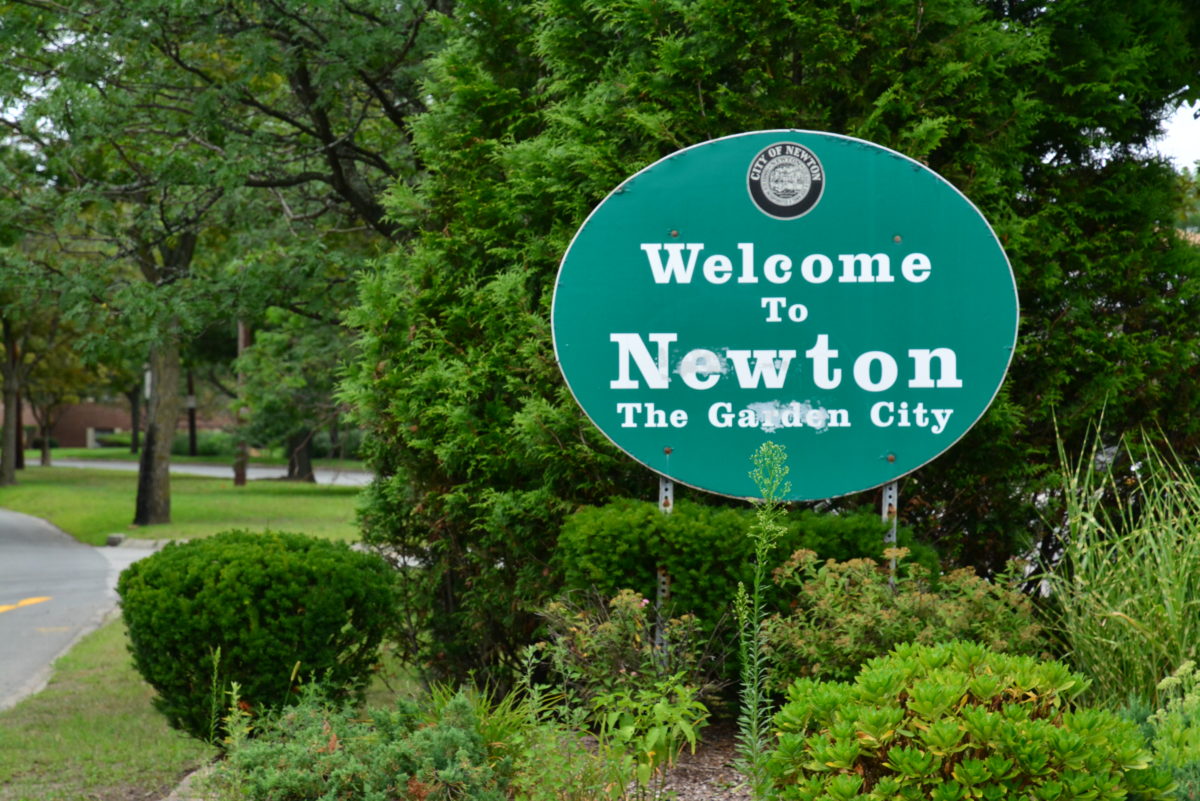If you listen closely to Town Hall conversations across Massachusetts today, you’ll likely encounter residential permitting discussions at a standstill between planners and developers. In fact, the rate of permitting across the Commonwealth since 2010 is less than half of what it was in the 1980s, according to Urban Land Magazine.
As a real estate attorney who has permitted hundreds of residential and commercial buildings in dozens of municipalities across Massachusetts over twenty years, I’ve witnessed many contentious discussions at Town Hall about preserving the “small town feel” of a suburban area. The answer has and always will be – planning.
In the past, local representatives who incorporated the word “planning” into the public record might be criticized by members of their community for being open to development and eventually opt out of the planning conversation to avoid contention. But without a plan, how do you stage a small town for imminent growth? Must you give up one for the other?
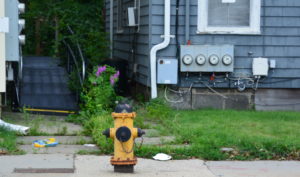
Reps from this city boast of big plans but sidewalks, old and littered, don’t yet reflect the mindset.
The word “development” in Greater Boston’s cities and towns has made many feel downright negative. Viewed as a precursor for traffic, crime, big chain stores and a loss of personality, it is seen as the antithesis of “Small Town Feel.”
Avoiding inevitable expansion, however, can mean loss of business, sluggish property values, little retail traffic, latent or piecemeal planning efforts, which lead to a lack of cohesion due to disparate multi-use housing projects (not to mention a negative, change-averse reputation, which can be the biggest setback of all.)
…how do you keep the “Small Town Feel” while staging the community for economic growth? Do you have to give up one for the other?
When One Town Worked Together
One town that’s rejected the change-averse attitude and steadily built a charming town center is the town of Hudson, 20 miles west of Waltham. It might not be comparable to the larger cities dealing with Boston overflow, but it’s a lesson in taking risks with a positive and persevering approach (“How One Massachusetts Town Bounced Back…”). It’s also a testament of how residents can encourage new businesses to integrate into their community and proactively work together with local officials – recognizing the benefits that economic development and innovation have on their community.
Said a local resident, “Hudson residents are excited when a new store opens downtown,” recalling the swarm that hit the Main Street Bagel Factory when it opened recenty.
Updating the downtown facades and adding sidewalks and a bike trail opened the door to new points of interest. You can sense the excitement as you pass by flags waving “open” in the wind on business stoops and the attention given to curb appeal (both by the business itself and the local town).
A Fragmented System Affects Your Standard of Living
When you’re looking to get a project approved, the Zoning Board and Planning Board are traditionally the two government bodies that can work against each other as you push to get a project approved. More often than not, if the town planner is not known for being open-minded or cooperative, you won’t see many new ribbon-cuttings from local companies in your neighborhood if other towns make the process more streamlined and, therefore, more appealing.
Not surprisingly, The Boston Globe (“Housing Boom Isn’t Hitting Boston Suburbs”) reported last year that growth around Boston today has bypassed many cities and towns in Massachusetts due to “decades of decisions that dampened development …making it harder to build in places beyond the crowded and increasingly costly city.”
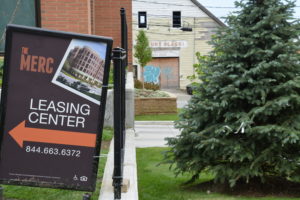
Waltham’s vision for high-end multi-housing projects is still blurry against a vandalized perimeter.
In this critical time – with population spillover occurring around the Greater Boston area – many representatives are starting to feel the heat and fast-track commercial and residential development. Undoing past laws or procedures that were designed to avoid excessive growth tends to be an incremental process but the short-term solution tends to be: start small from a housing standpoint. Unfortunately, that approach can lead to a hodgepodge of projects across town that do nothing to improve the overall standard of living.
Dismantling the Old Way Is A Slow Process
In the past two years especially, some areas have seen big business pass by (into neighboring towns) due to better tax incentives, easier permitting rules and the ability to fast-track building projects. It was one of the bigger subjects of 2017 debate for Newton mayoral candidates (“Newton Mayoral Candidates Make a Case for Business”).
Currently, and this goes for many municipalities, you might spend over a year working through frustrating red tape across multiple administrative bodies with different rules.
“Some towns — even those relatively close to Boston — have permitted virtually no multifamily housing in recent years and created rules that drive up the cost of single-family development,” reported the Boston Globe’s Tim Logan, (“Housing Boom Isn’t Hitting Boston Suburbs”).
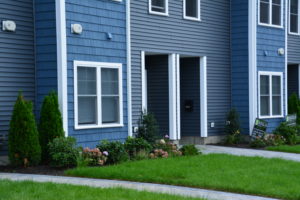
Small, multi-family housing has popped up sporadically around Newton.
Old zoning rules and regulations from the building boom 10 years ago, Logan reports, have kept developers focused on small housing projects that are easier to permit, as you can clearly see in Newton. But that’s all about to change, say Newton representatives, who are trying to make it easier for developers with a one-stop shop approach to obtaining building permits. Currently, and this goes for many municipalities, you might spend over a year working through frustrating red tape across multiple administrative bodies with different rules.
The Rush to Plan Begins
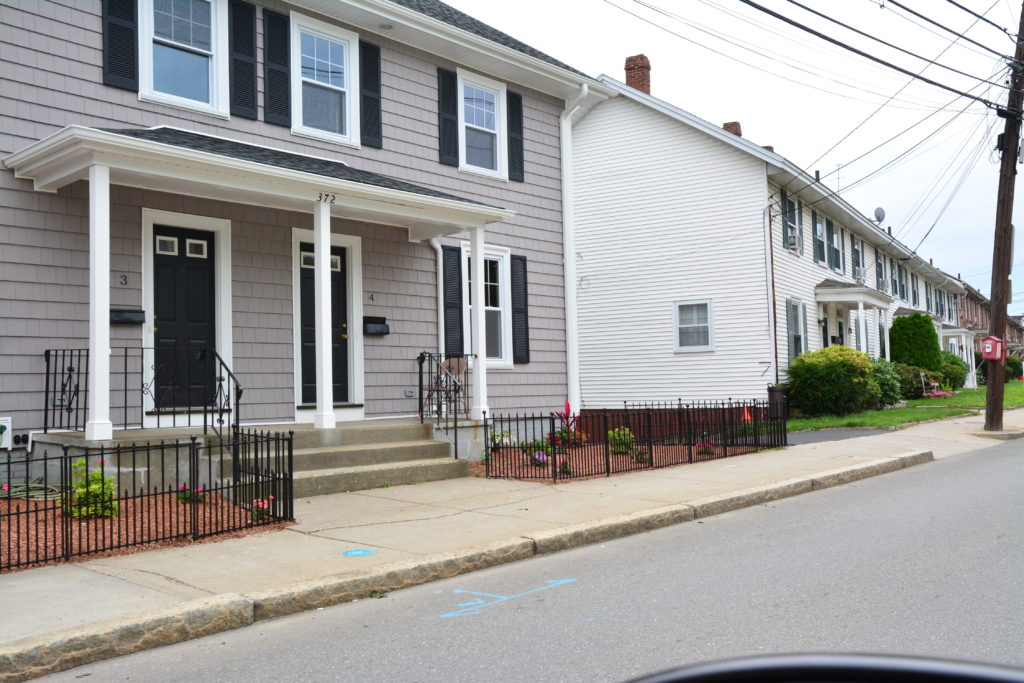
In a variety of towns, you’ll see clear divisions of new (left) and old (right)
From the Newton mayor unveiling an “ambitious housing plan” last year, (“Newton Mayor Unveils Ambitious Housing Plan for the City”) to the South Shore Chamber of Commerce receiving a stamp of approval with an award from Gov. Charlie Baker, towns are ramping up their efforts to get a move on. Many “recognize” the need to improve housing and economic development, but the changes needed are slow going due to local push-back from small town alliances or simply a Planning Board that believes major overhauls in the system are costly or unnecessary.
City officials are trying to make it easier for developers with a one-stop shop approach to obtaining building permits.
What Local Businesses Want Now: Customers and Parking
When my retail clients offer their perspectives on local development, “foot traffic” and “convenient customer parking” always seem to come up first.
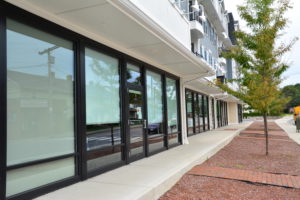
New retail development in Newton
In Mansfield, recent changes to the town’s 2015 Strategic Plan addressed parking issues and general access to downtown. “In order to sustain a business, you need customers,” said Mansfield Town Manager Bill Ross to the Sun Chronicle, (“Focus on downtowns: In Mansfield, mixed use proves successful”) who also heads a special committee to study how to improve the downtown area.
Drawing new customers and keeping the Small Town Feel, however, seems impossible to some, and Mansfield residents indeed have complained it’s not the way “it use to be” (even though the Sun Chronicle described the pre-developed town as “outdated.”) Is there a happy medium?
Planning Is Required To Be a Top Ten City
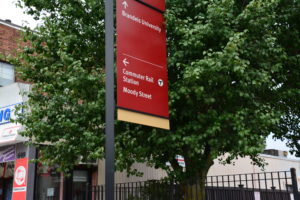
Newer signs present a more updated look while welcoming newcomers or customers who might not be familiar with the area.
No matter the size of the area, today’s forward-thinking community realizes the importance of creating a “destination” and that there’s more to creating the “right” plan to stay competitive.
Community representatives should be more intuitive, insightful and agreeable about what residents, businesses and visitors want (whether it’s updating signs, covering over graffiti, changing difficult traffic patterns, or adding new lamp posts and landscaping).
Whether a population of 10,000 or 100,000, take a look at any list of top ten cities or small towns in America, and you’ll see the same descriptive words: “updated,” “trendy,” “vibe,” “culture,” “scene,” “charm,” or “modern amenities.” Considering that (and what makes townspeople most proud) are areas on which residents and businesses can build.
Robert Pellegrini, Jr. Esq. is a Massachusetts real estate attorney and estate planner who works with residential and commercial clients as well as municipal representatives on matters relating to building, real estate and development.

